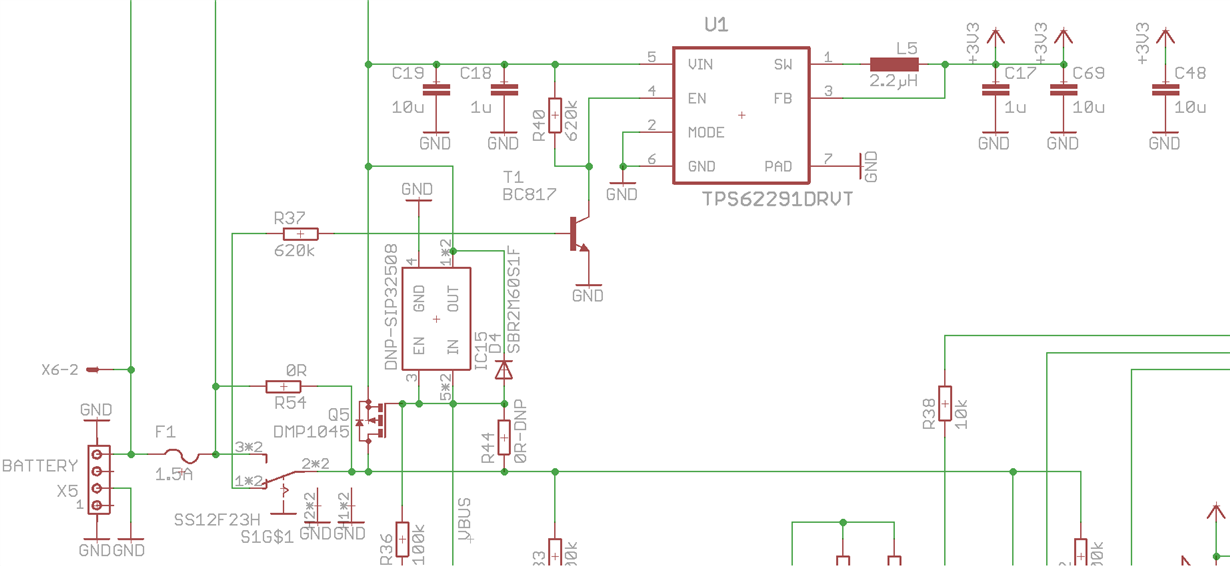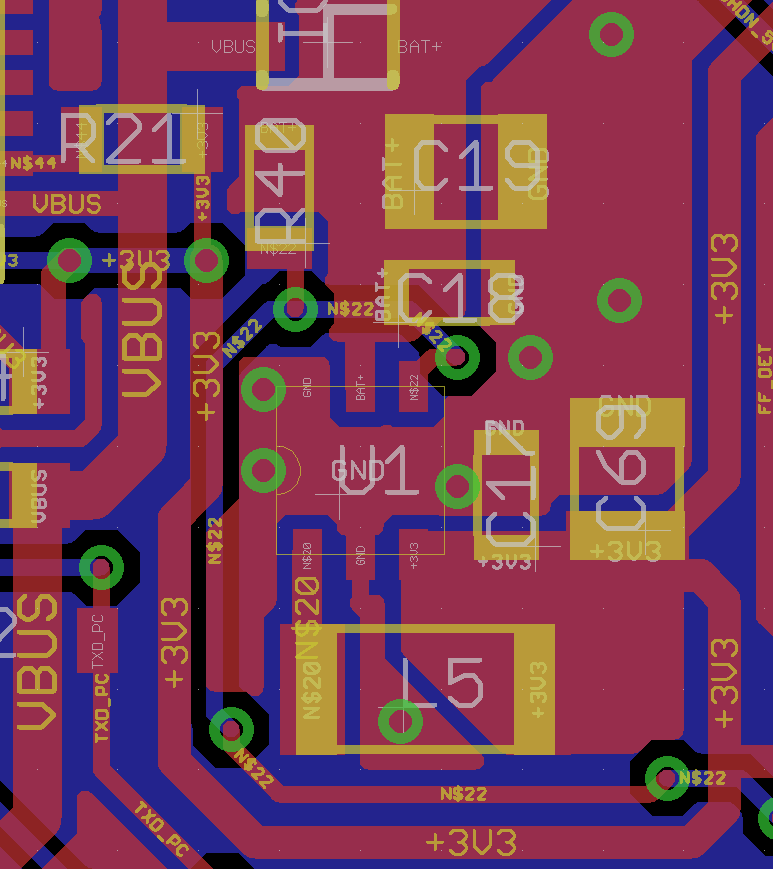HI,
In my project I use the TPS62291 to convert the input voltage of 5V (USB from Raspberry PI) or alternatively 3-4.2V from a LiPo cell to 3-3.3V for some sensors and a microcontroller (max. 200mA). It's working fine, but of the first series of 50, two devices came back with failures. They worked when they were new. It seems like just the low side MOSFET is blown, because with diode testing range I measured 75mV between the OUT pin and GND. And the device part 3.3V for few seconds, before it heats up and runs into thermal protection. After exchanging the part, the two devices are working well.
Can you tell me a possible reason for such failure? By the way, the 48 other devices are working for months with no problems.
Thank You.




